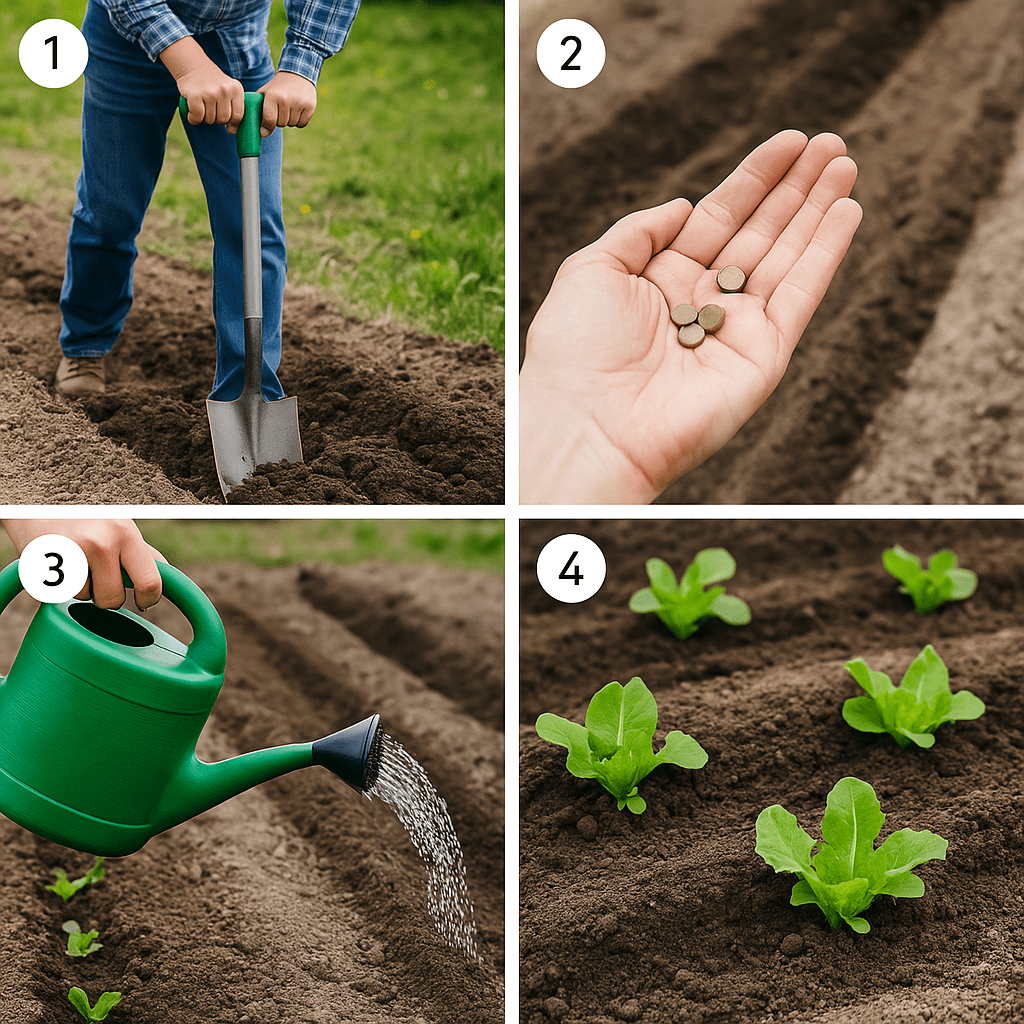Starting a vegetable garden from scratch can feel overwhelming at first. However, with the right steps, tools, and mindset, anyone can grow fresh produce at home—even with no prior experience. In this beginner gardening guide, you’ll learn how to start a vegetable garden from scratch using proven techniques and practical tips to ensure your first season is a success.
Why Start a Vegetable Garden?
Growing your own vegetables isn’t just rewarding—it’s also healthier, more sustainable, and often cheaper than buying produce at the store. You control what goes into the soil, how it’s fertilized, and what pests are (or aren’t) treated.
Planning Your Garden
Choose the Right Location
The success of your vegetable garden heavily depends on the location you choose. Look for:
- At least 6–8 hours of direct sunlight per day
- Good drainage to prevent waterlogging
- Easy access to water
Avoid placing your garden near trees or large shrubs, which can compete for nutrients and shade your crops.
Decide What to Grow
As a beginner, it’s best to start with low-maintenance vegetables. Popular beginner-friendly options include:
- Lettuce
- Carrots
- Radishes
- Zucchini
- Cherry tomatoes
- Green beans
Choose crops that match your local climate and growing season.
Determine Garden Size
For your first garden, start small. A 4×4 foot raised bed or a few containers on a balcony is enough to learn the basics without becoming overwhelmed.
Preparing the Garden Bed
Raised Beds vs. In-Ground
- Raised beds offer more control over soil quality and drainage.
- In-ground beds are cost-effective if your soil is already rich and loose.
Soil Preparation
Healthy soil is the foundation of a successful vegetable garden. Use this mix for optimal results:
- 50% topsoil
- 30% compost
- 20% organic matter (peat moss, coconut coir, or aged manure)
Test your soil’s pH using a kit—most vegetables thrive in pH between 6.0 and 7.0.
Planting Your Vegetables
When to Plant
Use your USDA Plant Hardiness Zone to determine the best time to plant. As a general rule:
- Cool-season crops like lettuce and carrots can go in early spring or fall.
- Warm-season crops like tomatoes and peppers should be planted after the last frost.
How to Plant
Follow the seed packet instructions carefully. Most vegetable seeds are planted 1–2 times as deep as their size. For example:
- Carrot seeds: ¼ inch deep
- Tomato seedlings: bury ⅔ of the stem to promote strong root growth
Space your seeds or seedlings according to the guidelines—crowding limits airflow and light, increasing disease risk.

Watering, Feeding, and Maintenance
Watering Guidelines
- Water early in the morning to prevent fungal growth.
- Keep the soil consistently moist but not soggy.
- A drip irrigation system or soaker hose is ideal for beginners.
Fertilizing
Use an organic, slow-release fertilizer every 4–6 weeks. Avoid overfertilizing—it can burn young plants and promote leaf growth over fruit.
Pest and Weed Control
- Use mulch (like straw or shredded leaves) to suppress weeds.
- Hand-pull weeds weekly.
- Try natural pest deterrents like neem oil, companion planting, and floating row covers.
Harvesting Your First Crop
Don’t wait too long to harvest! Many veggies lose flavor or become tough if left on the plant too long.
- Leafy greens: pick the outer leaves regularly.
- Zucchini: harvest when 6–8 inches long.
- Carrots: check size by gently brushing soil aside at the root crown.
Common Mistakes Beginners Make (And How to Avoid Them)
- Overwatering – leads to root rot.
- Planting too much – it’s better to start small and expand later.
- Ignoring sunlight – most veggies need full sun to thrive.
- Skipping soil prep – nutrient-poor soil = poor harvests.
Before planting, make sure you understand the basics of sunlight, watering, and plant spacing by reading our full guide here.
Conclusion
Starting a vegetable garden from scratch is an achievable and rewarding goal for any beginner. With good planning, the right tools, and consistent care, your garden will soon provide fresh, delicious produce straight from your backyard—or balcony!
Save this guide for your next planting weekend or share it with a friend who’s just starting out.
FAQ
Q1: How long does it take to grow vegetables from seed?
Most vegetables take 30 to 90 days to mature, depending on the type and growing conditions.
Q2: Can I grow vegetables in containers?
Absolutely! Many veggies—like tomatoes, lettuce, and peppers—grow well in pots, especially if space is limited.
Q3: Do I need special soil for vegetables?
While not required, well-amended soil rich in organic matter will greatly improve your results and yields.
Looking for quality gardening tools to get started? You can find beginner-friendly sets here on Amazon.
